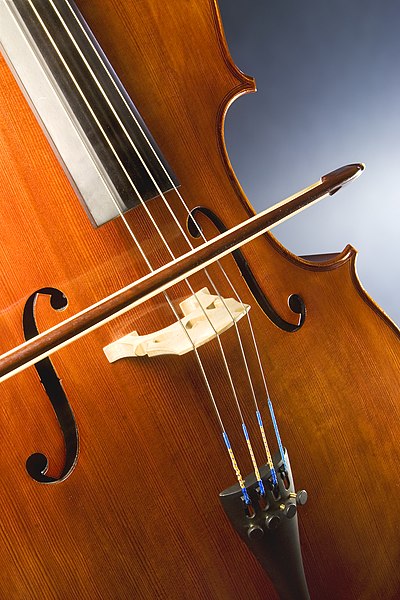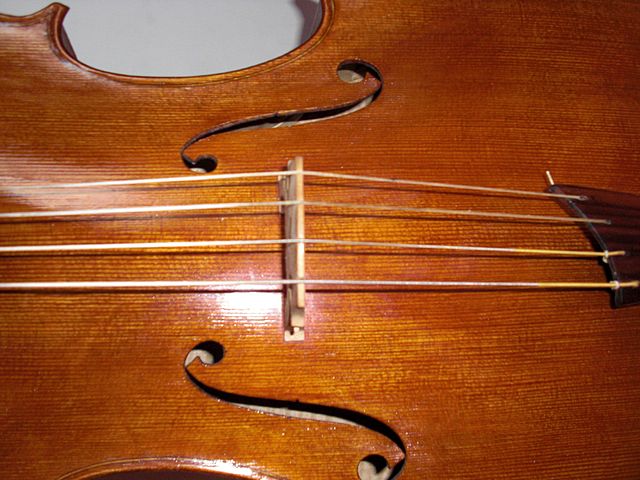A Stradivarius is one of the violins, violas, cellos and other string instruments built by members of the Italian family Stradivari, particularly Antonio Stradivari, during the 17th and 18th centuries. They are considered some of the finest instruments ever made, and are extremely valuable collector's items.
Antonio Stradivari, by Edgar Bundy, 1893: a romanticized image of a craftsman-hero
In 1924, Toscha Seidel bought the Da Vinci Stradivarius violin for $25,000 from a private dealer from Berlin.
Antonio Stradivari violin of 1703 on exhibit, behind glass, at the Musikinstrumentenmuseum (Berlin Musical Instrument Museum), 2006
The cello ( CHEL-oh), or violoncello ( VY-ə-lən-CHEL-oh, Italian pronunciation: [vjolonˈtʃɛllo]), is a bowed (sometimes plucked and occasionally hit) string instrument of the violin family. Its four strings are usually tuned in perfect fifths: from low to high, C2, G2, D3 and A3. The viola's four strings are each an octave higher. Music for the cello is generally written in the bass clef, with tenor clef, and treble clef used for higher-range passages.
Cello close-up
Cello close-up with a bow.
A baroque cello strung with gut strings. Note the absence of fine-tuning pins on the tailpiece.
Josephine van Lier plays a violoncello piccolo, a five-string variant of the Baroque cello, during a recording session of Bach's 6th Cello Suite.







